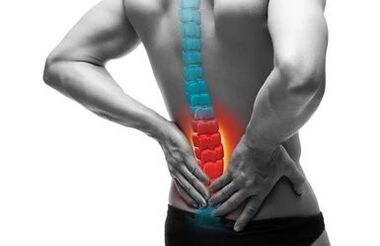Osteochondrosis is a degenerative disease of articular cartilage tissue that can occur in any joint as well as in the intervertebral discs. The disease's name comes from the Greek words meaning "bone" and "cartilage."Osteochondrosis develops due to a weakening of the physiological (i.e., normal, naturally provided) nutrition of the intervertebral disc.This makes it difficult for cartilage tissue to recover even after minor injuries.In addition, most people, especially those who sit for a long time, have uneven loads on their back muscles due to maintaining one posture in the workplace for a long time, having their ears pressed to their shoulders for long periods of time while talking on the phone, carrying a backpack on one shoulder, and using mattresses and pillows that are too soft.
The disease's name comes from the Greek words meaning "bone" and "cartilage."Osteochondrosis develops due to a weakening of the physiological (i.e., normal, naturally provided) nutrition of the intervertebral disc.This makes it difficult for cartilage tissue to recover even after minor injuries.In addition, most people, especially those who sit for a long time, have uneven loads on their back muscles due to maintaining one posture in the workplace for a long time, having their ears pressed to their shoulders for long periods of time while talking on the phone, carrying a backpack on one shoulder, and using mattresses and pillows that are too soft.
Causes of osteochondrosis
Nearly all middle-aged and older adults are at risk for osteochondrosis of the spine because the process that leads to the degeneration of cartilage tissue is completely natural.Risk factors and causes of the more obvious forms of osteochondrosis are:
- flatfoot;
- being overweight;
- strenuous physical activity;
- lack of physical activity;
- genetics;
- Spinal injury.
Previously, it was thought that spinal osteochondrosis mainly appeared after the age of 35, but recently patients aged 18-20 years have complained of back pain caused by osteochondrosis.Possible reasons for the prevalence of osteochondrosis in young people are not only a sedentary lifestyle but also related to regular stress and poor posture.
Symptoms of osteochondrosis – pain and limited movement
There are cervical osteochondrosis, thoracic osteochondrosis and lumbar osteochondrosis.But regardless of the type of disease, a person will always complain of pain.Where in the back it appears and whether it radiates to the extremities depends on the location, i.e. in which part of the spine the degenerative process occurs.Pain can be caused by a variety of causes, such as nerve root compression or a herniated disc.A herniated disc is a rupture of the annulus fibrosus and a herniation of the disc core (i.e., the cartilage tissue itself).In many cases, disc herniation occurs precisely in the context of osteochondrosis.
Men and overweight people are more likely to develop a herniated disc than others
Pain caused by osteochondrosis not only varies in intensity, but also in location.With cervical osteochondrosis, pain occurs not only in the neck, but also in the shoulders and radiates to the arms.
Sometimes patients experience headaches and dizziness.
Thoracic osteochondrosis can sometimes "mimic" heart pain.It can be aggravated by various movements, whether sharp or pulling.If you have osteochondrosis in the lower back, the pain will radiate to the legs.In the case of intervertebral disc herniation, sometimes the limbs will feel numb, as if they have been "pulled away".Low back pain severely limits range of motion and may affect the function of internal organs.
Intervertebral disc herniation mainly occurs in the cervical and lumbar spine, and less commonly in the thoracic spine.
Complications and treatment of osteochondrosis
This spinal disorder is associated with pain, so it is necessary to treat osteochondrosis to eliminate or significantly reduce it, thereby improving quality of life.The question of how to cure osteochondrosis has generated much controversy.The treatment of osteochondrosis is a long process; it is associated with the restoration of the spinal structure and the strengthening of the back muscles and, if necessary, with the surgical treatment of the herniated disc.It has always been necessary to fight pain, since the cause of the disease - degenerative phenomena in the cartilage tissue of the joints - is irreversible and may mainly affect the surrounding tissue.Improve blood circulation and strengthen muscles through physiotherapy, massage and swimming.However, even with diligent and regular exercise and surgery, the pain does not go away immediately.
Comprehensive Treatment of Osteochondrosis: Other Options
To relieve the pain of osteochondrosis, topical and internal nonsteroidal anti-inflammatory drugs (unfortunately, long-term use in tablet form can have significant side effects) and B vitamins can be used.B vitamins are known as neurotrophic agents because they help restore the function of nerve fibers.The most important are vitamin B1 (benfotiamine) and vitamin B6 (pyridoxine).pill.Benfotiamine normalizes metabolic processes in damaged nerve roots, pyridoxine improves the transmission of nerve impulses, and both vitamins help reduce pain.Treatment of osteochondrosis with B vitamins is one element of a comprehensive treatment approach.



















